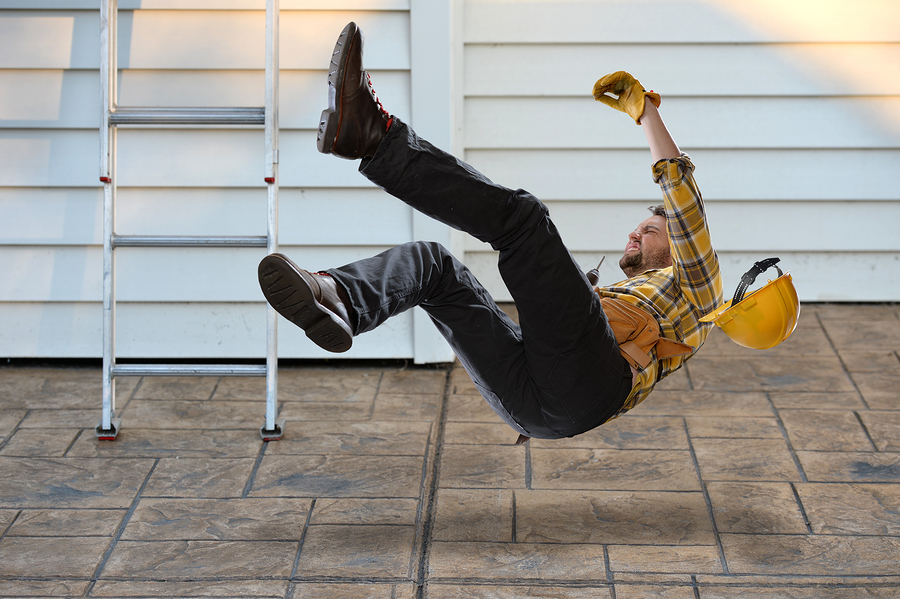
Construction workers are at a higher risk for injuries on the job, including even fatal injuries.
Members of the workforce know that all careers come with their own set of drawbacks. Without a doubt, some are inherently more dangerous than others.
Construction workers spend their days using heavy tools and machinery, often at intimidating heights. Accidents can happen at any moment. In fact, one in five workplace fatalities in the private sector come from the construction industry.
If you’re in this line of work, you may have even witnessed some of the most common accidents in motion. However, they don’t have to be an inevitable part of the job. Learning more about how they happen can help you to recognize and avoid surrounding dangers.
What Causes Construction Accidents?
There are so many moving parts on construction sites. Therefore, it can be complicated to pinpoint the cause of an accident. Human error, a lack of adequate equipment, or a combination of the two is often to blame. Additionally, there are only a handful of types of accidents that recur as a result of the most common causes.
Falls
Recent research showed that over the course of a year, almost 34% of construction fatalities happened because of falls. Employers are responsible for providing fall protection at heights beyond six feet above the ground and at any height when employees are working above dangerous equipment.
Unfortunately, workers can wind up on raised platforms with unprotected edges. Unfinished homes and commercial properties leave construction employees exposed to holes such as skylights in the making as well as unstable, rotting floors in older buildings under renovation.
Falling Objects
Tools, beams, debris, and virtually any other material can fall at a rapid speed with little to no warning. This can happen when objects are left unsecured or when they slip from a worker’s hands. It puts employees working below in harm’s way.
Lifting equipment such as jacks and cranes hoist much heavier materials that have greater damage potential if they slip away. Steel beams and concrete can easily weigh thousands of pounds. As such, the fragile human body is no match.
Electrocutions
Construction employees work close to electrical sources on a regular basis. They’re four times more likely to get electrocuted than workers in other industries.
Power sources run above them as well as beneath them in complex networks of live wires, receptacles, and connectors. There is often no immediate way to tell whether any components are damaged. Electrical systems that are in working order are also dangerous when workers get too close and when power lines aren’t de-energized when necessary.
Caught or Crushed In-Between Accidents
A worker’s limb or entire body can get sandwiched between the weight of two objects. In situations where getting crushed isn’t fatal, it typically still has devastating outcomes, like amputations. Rescue teams don’t always have immediate access to trapped workers.
After six to eight hours without blood supply, limbs become irrecoverable.
It’s not only the weight of the objects that can harm a trapped worker. Those barriers can stop workers from escaping an area that is unsafe in other ways, for example, filled with toxic chemicals.
Scaffolding, Crane, and Ladder Accidents
Just like any other equipment, scaffolding, cranes, and ladders sustain wear and tear over time. They become unstable when pushed past their usability. Scaffolding can collapse not only on hard hat-wearing staff, but also on completely unprotected passersby. The ropes or chains that cranes rely on can snap if they’re worn down or overloaded.
Falls from ladders, even at modest heights, can lead to serious injuries. Workers can suffer anything from a twisted ankle to critical spinal and head injuries when a ladder breaks. Ladders in tiptop shape also pose dangers when they’re placed on supportive surfaces or are improperly locked.
How to Create a Safe Workplace
A construction site can be a safe work environment when workers have the correct, properly functioning equipment and they are properly trained in terms of safety guidelines and procedures.
If your workplace isn’t adhering to guidelines, don’t be silent about it. Minnesota requires employers to prioritize safety. This is implemented through requirements like requiring them to pay for personal protective equipment.
Safety Training
Safety training for construction sites is just as important for protecting employees as it is for the safety of the general public in the surrounding area.
The Occupational Safety and Health Administration (OSHA) offers many training courses to prepare workers for common risks and scenarios that arise on the job. Available training ranges from basic safety orientation to drug and alcohol abuse in the workplace.
Frequent Safety Meetings
Before starting a new project, a safety meeting should be held. It’s critical for all personnel who are going to be working on the site, including contract workers, to attend.
Kick-off meetings should cover risks and workplace hazards that will be present in all phases of construction. A job site walkthrough should be conducted so all personnel are familiar with the layout. Make sure all workers know who the safety manager is.
During all stages of the project, hold a periodic toolbox talk. They can take place daily or weekly depending on the project, Dedicating just five to 10 minutes to discussing a specific safety issue can save lives. Cover recent changes, inspect tools, and open the floor for questions.
Maintain a Clean Workspace
When employees work in a messy environment, they may not see all hazards, which increases the chances of an accident. Something as small as a misplaced tool could result in a harmful fall. Store materials in their designated places and keep work areas free from debris that can mask dangers.
Require Certification for Hard to Operate Machines/Dangerous Materials
Never operate machinery that you’re not certified to use unless you’re under proper supervision. There are limitations varying pieces of equipment depending on their capacity. For example, Minnesota requires a crane operator certificate for cranes that lift five or more tons. No two machines are the same, so having experience with less powerful equipment is not enough to prepare you.
Contact a Workplace Accident Attorney
All employees deserve to make an honest living in a safe environment. If your workplace isn’t taking the necessary precautions and you’ve been injured because of it, speak to an accident attorney about your options.
Sand Law LLC specializes in workplace accidents. We’ve represented numerous clients in the construction industry. Our experienced team will pursue the utmost compensation in your case. For a free consultation, contact us online or call us at 651-291-7263.

